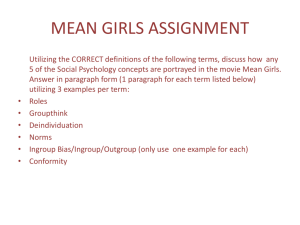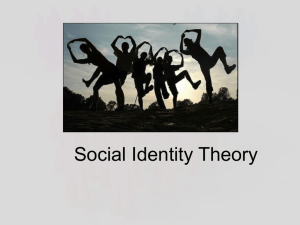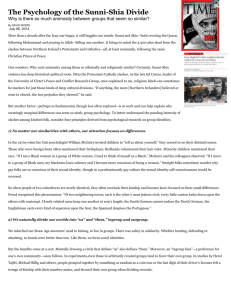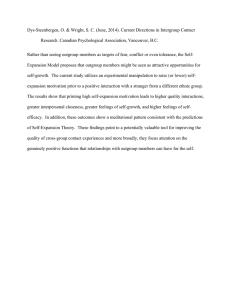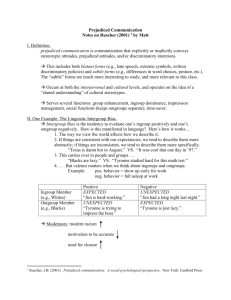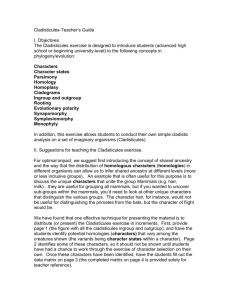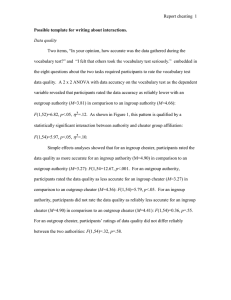Internal Assessment Notes Part 1-Choosing a topic 1. Warm up
advertisement
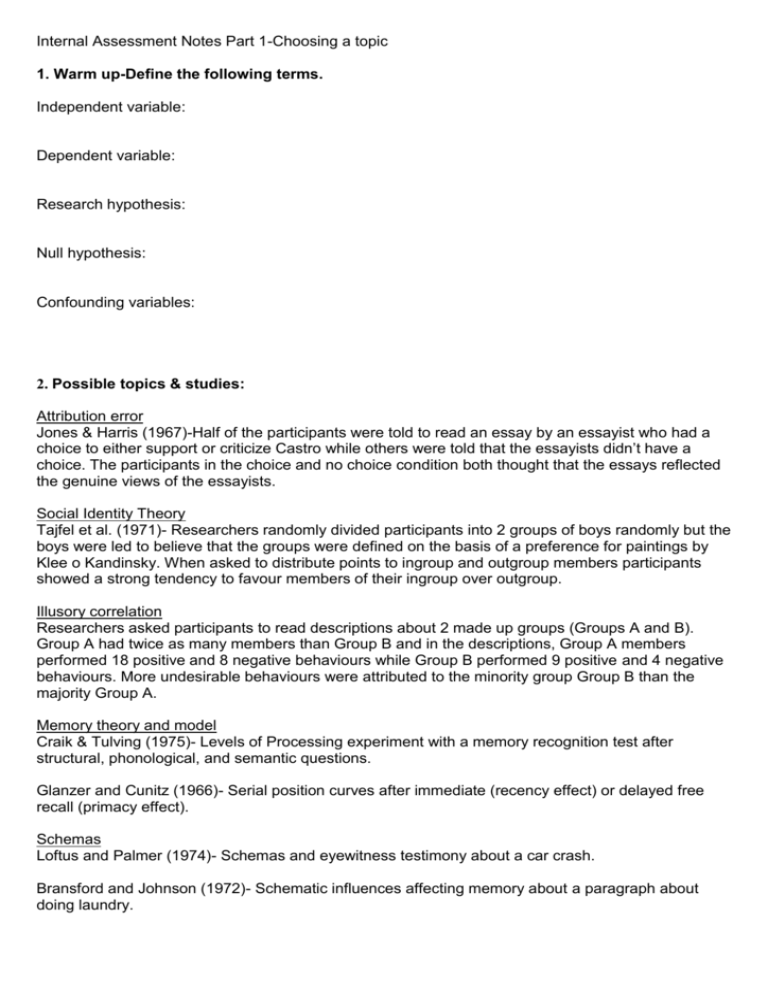
Internal Assessment Notes Part 1-Choosing a topic 1. Warm up-Define the following terms. Independent variable: Dependent variable: Research hypothesis: Null hypothesis: Confounding variables: 2. Possible topics & studies: Attribution error Jones & Harris (1967)-Half of the participants were told to read an essay by an essayist who had a choice to either support or criticize Castro while others were told that the essayists didn’t have a choice. The participants in the choice and no choice condition both thought that the essays reflected the genuine views of the essayists. Social Identity Theory Tajfel et al. (1971)- Researchers randomly divided participants into 2 groups of boys randomly but the boys were led to believe that the groups were defined on the basis of a preference for paintings by Klee o Kandinsky. When asked to distribute points to ingroup and outgroup members participants showed a strong tendency to favour members of their ingroup over outgroup. Illusory correlation Researchers asked participants to read descriptions about 2 made up groups (Groups A and B). Group A had twice as many members than Group B and in the descriptions, Group A members performed 18 positive and 8 negative behaviours while Group B performed 9 positive and 4 negative behaviours. More undesirable behaviours were attributed to the minority group Group B than the majority Group A. Memory theory and model Craik & Tulving (1975)- Levels of Processing experiment with a memory recognition test after structural, phonological, and semantic questions. Glanzer and Cunitz (1966)- Serial position curves after immediate (recency effect) or delayed free recall (primacy effect). Schemas Loftus and Palmer (1974)- Schemas and eyewitness testimony about a car crash. Bransford and Johnson (1972)- Schematic influences affecting memory about a paragraph about doing laundry.

